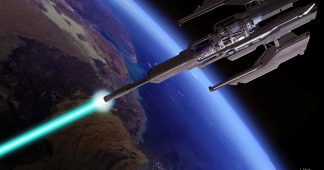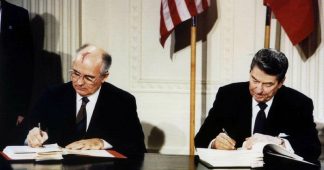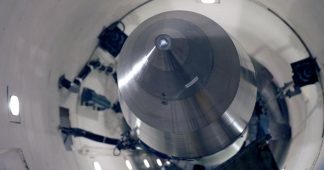President Trump To Create Space Force: Another Race US May Trigger To Lose
by Tyler Durden
Mon, 04/02/201
Authored by Arkady Savitsky via The Strategic Culture Foundation,
On March 23, 1983, 35 years ago, President Ronald Reagan unveiled his space-wars program, the SDI, to intercept and destroy incoming missiles and other weapons for battling in this new domain. It never came to fruition, as the technology that existed at that time was insufficiently advanced to meet the requirements.
But times change. It has been announced that the project is once again to be pursued. The US plans to deploy weapons in space, Russian Foreign Minister Sergey Lavrov issued a warning about this in January. That warning proved accurate.
Donald Trump believes that space is becoming a “warfighting domain,” just like the land, air, and sea, and is thus encouraging the creation of a space force on par with the other branches of the armed forces. It was hardly an off-the-cuff comment.
The idea enjoys strong support in Congress. Pushing forward such an initiative would strengthen the president’s position at a time when he needs it the most. Some lawmakers say that force could be created as part of the Department of the Air Force in just three to five years. The proposal is not popular among the military brass, but on March 13 the president made his views known. “The president is very focused on outcomes. He has prioritized space, he has recognized the threats that have evolved, and the pace with which they’ve evolved, and he recognizes that as a warfighting domain,” says Kenneth Rapuano, assistant defense secretary for homeland defense and global security.
The initiative dovetails with the recently issued National Security Strategy. Some initial steps have already been taken. Deputy Defense Secretary Patrick Shanahan, the chief space adviser, provided lawmakers with an interim report on upcoming space reforms this month. An updated report is due August 1.
No doubt Donald Trump’s statement was prompted by President Putin’s March 1 address to lawmakers in which he unveiled some details about Russia’s new weapons. The balance of forces in the air, land, and sea is not tilting in America’s favor, but domination of space could change that picture. The Joint Vision 2020 states that the US should dominate and control the military use of space.
What could this mean in practice? It’s logical to assume that all the satellites belonging to the branches of the military and STRATCOM will operate under the new command. No doubt the structure will have teeth, such as the HTV-2 and AHW hypersonic-glide-vehicle weapons, the Boeing X-37 spacecraft, and the Dream Chaser reusable space planes. The X-37 has flown several secret missions into orbit carrying mystery payloads. Anti-satellite weapons have been tested. Now that they have undergone testing on land and at sea, laser technology will move to space.
The 1967 Outer Space Treaty imposes no restriction on conventional weapons. The diplomatic efforts to reach an international agreement regulating space activities have been rejected by the US as disingenuous non-starters. In 2014, the UN General Assembly adopted a Russian resolution, “No First Placement of Weapons in Outer Space,” which was dismissed by Washington. The US has never come up any initiatives of its own.
So, the US wants to dominate space. But will it? The USSR has suspended many space-war programs, such as “space-to-space” munitions, which could be quickly brought back to life. The R36 ORB was actually the third stage of the well-known Voevoda (Satan) ICBM. Its warhead could be placed in orbit and left there for some time, reducing to just a few minutes the time required to strike any target on Earth. The weapon was even operational for a short period.
There have been programs to create space platforms, including some that were nuclear powered.
Russia was the only country to successfully use Hall–effect thrusters to maneuver objects in space. In his famous “new weapons” speech, President Putin mentioned the Avangard boost glider that could be easily reconfigured for space-interceptor missions. In 1984 Russia launched a program to create the 79М6 Kontakt anti-satellite (ASAT) system as a direct response to US ASAT tests. The system carried a modified MiG-31D fighter on board that theoretically could attack as many as 24 satellites within a 36-hour period. The Kontakt never became operational, as tensions subsided and Moscow reached an agreement with Washington to terminate the program. It could be resurrected, leaving no American satellite safe. Some sources report that the development has already been revived. And almost all modern US systems are heavily dependent on satellites.
It could be that opening up discussions with Russia on measures to curb the militarization of space might be a much cheaper and more reliable way to safeguard US national security than throwing down the gauntlet. It’s quite likely that the US would touch off a race it won’t win.











